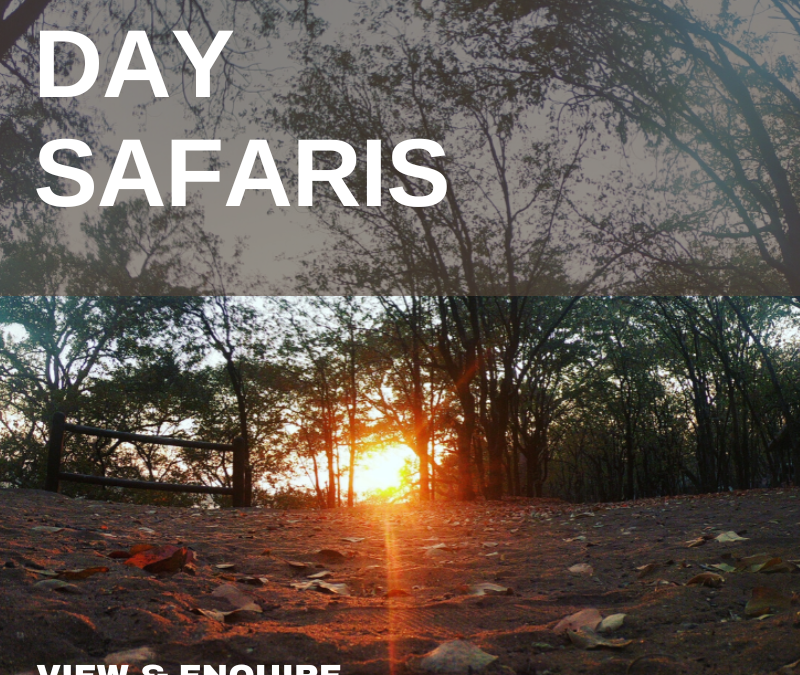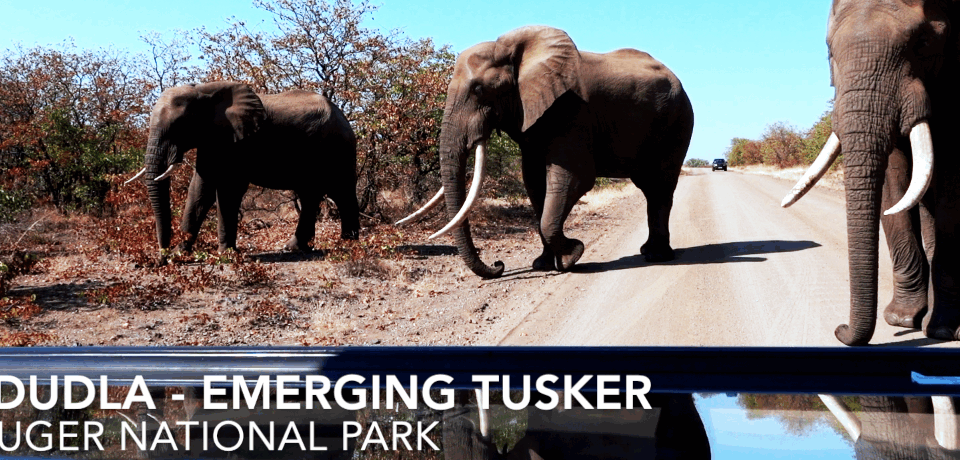Unforgettable Full-Day Kruger National Park Safari: Southern Region Adventure
Discover the ultimate Kruger National Park safari in South Africa’s southern region, exploring Skukuza, Berg-en-Dal, Pretoriuskop, and Lower Sabie. Spanning nearly 2 million hectares, Kruger is a world-renowned wildlife sanctuary teeming with the Big Five (lion, leopard, rhino, elephant, buffalo) and breathtaking landscapes.
This guide covers everything you need for an epic full-day safari, including 20 expert tips, packing essentials, attire advice, and insights from Safaria, a 5-star TripAdvisor-rated tour operator led by expert guide Andrew Wagner.
Whether you’re searching for Kruger National Park tours, day safaris, or a Big Five adventure, this is your go-to resource for planning a memorable #KrugerSafari or #AfricanAdventure.
Why Choose a Southern Kruger National Park Safari?
The southern region of Kruger National Park is a hotspot for wildlife enthusiasts. With diverse ecosystems and high animal concentrations, Skukuza, Berg-en-Dal, Pretoriuskop, and Lower Sabie offer prime game-viewing opportunities. Expect to encounter:
-
Lions and leopards prowling the savanna.
-
Elephants and rhinos grazing near waterholes.
-
Buffalo herds, colorful birdlife, and more.
A full-day safari maximizes your chances of spotting the Big Five while immersing you in Kruger’s untouched wilderness.
Your Day Safari Itinerary: Southern Kruger’s Finest Camps
5:30 AM – Departure and Early Morning Game Drive
Your day begins before sunrise, with a 5:30 AM pickup from your lodge or camp, arranged by Safaria. The cool morning air and the chorus of waking birds set the stage as you board an open safari vehicle, equipped with blankets and ponchos for comfort. Andrew Wagner, with over 3,000 guided tours since 2017, leads the way, sharing insights about the park’s history and the animals you’re about to encounter.
The first game drive heads toward Skukuza, Kruger’s largest camp and administrative hub, situated along the Sabie River. The early hours are prime for spotting predators like lions and leopards returning from their nocturnal hunts. Andrew’s keen eye and tracking skills ensure you don’t miss a thing—whether it’s a pride of lions lounging on the S65 gravel road or a shy leopard camouflaged in the riverine thickets.
8:30 AM – Breakfast at Skukuza
By 8:30 AM, you arrive at Skukuza, a sprawling camp named after Kruger’s first warden, James Stevenson-Hamilton. Nestled on the Sabie River’s southern banks, Skukuza offers shaded picnic areas and lookout points where you might spot warthogs or vervet monkeys scavenging for scraps. Enjoy a hearty breakfast at the camp’s restaurant, with options ranging from traditional South African bobotie to continental spreads. Andrew shares stories of Skukuza’s evolution from a tented camp in 1902 to the park’s bustling capital, enriching your experience with historical context.
10:00 AM – Flexible Route to Berg-en-Dal, Lower Sabie, or Pretoriuskop
Post-breakfast, the safari continues with a flexible route tailored to the day’s wildlife sightings and reports from other guides in the bush. Andrew, leveraging his extensive network and knowledge, decides whether to head toward Berg-en-Dal, Lower Sabie, or Pretoriuskop, ensuring the best possible game viewing. This dynamic approach maximizes your chances of spotting rare animals like cheetahs, wild dogs, or sable antelope.
-
Berg-en-Dal: A 30-minute drive along the S110 Matjulu Loop takes you through mountainous terrain with granite boulders and sourveld grasslands, ideal for rhinos and wild dogs. The camp, nestled on the Matjulu Spruit, offers dense woody canopies and excellent birding, with species like the Lizard Buzzard or Gorgeous Bush-shrike. A short guided walk around the perimeter reveals unique flora and rare antelope like the Lichtenstein’s hartebeest.
-
Lower Sabie: A scenic drive along the H4-1 road leads to this camp on the Sabie River, known for its leopard sightings and elephant herds. The route passes through knob-thorn and marula savanna, where you might spot cheetahs or lions. Lower Sabie’s lookout points offer stunning views of the Lebombo Mountains, perfect for photography.
-
Pretoriuskop: The S14 Fayi Loop, a 45-minute drive, winds through terminalia woodlands where sable antelope and eland are occasionally spotted. As Kruger’s oldest camp, established in 1927, Pretoriuskop’s vibrant red trees create a nostalgic backdrop. The area’s high rainfall supports lush grasslands, attracting raptors like the Martial Eagle.
1:00 PM – Lunch at Chosen Camp
By 1:00 PM, you arrive at the selected camp—either Berg-en-Dal, Lower Sabie, or Pretoriuskop—for lunch. Each camp offers a unique dining experience:
-
Berg-en-Dal: Enjoy a meal in the camp’s airy restaurant, surrounded by acacia trees and the sounds of the Matjulu Spruit.
-
Lower Sabie: Dine on the restaurant’s deck overlooking the Sabie River, where hippos and crocodiles are frequent visitors.
-
Pretoriuskop: Savor lunch in the camp’s shaded courtyard, with Andrew sharing tales of its historical significance.
As you eat, Andrew recounts his 35 years of Kruger memories, from childhood visits to guiding over 270 days a year. Keep your binoculars ready for opportunistic sightings, like a Half-collared Kingfisher at Lower Sabie or a vervet monkey at Pretoriuskop.
2:30 PM – Afternoon Game Drive and slow return to Gate of entry
The afternoon drive explores routes connecting the chosen camp to another southern region highlight, such as the H4-2 road toward Crocodile Bridge or the S3 Voortrekker Road. These areas teem with wildlife, from impala herds to solitary cheetahs. Andrew’s storytelling brings the landscape to life, weaving in facts about Kruger’s conservation efforts and rare species like reedbuck. A stop at Nkumbe Lookout offers panoramic views over the plains toward Skukuza, where you can stretch your legs and photograph the Ship Mountains’ fairytale-like vistas.
As the afternoon sun fades, you may stop for a last comfort break and curio shop before then finally heading back to the gate of entry or the camp that you might be staying at. Andrew wraps up with a story about the “Kruger effect”—the emotional bond visitors form with the park. By 4:30 PM, you’re back on the road to your lodge or camp, with a Safaria sightings journal to record your memories.
#KrugerNationalPark #KrugerParkSafari #Safaria #
What to Expect on a Kruger Park Day Safari
A Kruger National Park day safari is a sensory overload of sights, sounds, and emotions. Here’s what you can anticipate:
-
Wildlife Galore: The southern region is renowned for its high density of animals. Expect frequent sightings of the Big Five, plus cheetahs, wild dogs, giraffes, zebras, and rare antelope like sable and Lichtenstein’s hartebeest. Birders will delight in over 300 species, from the Trumpeter Hornbill to the Kori Bustard.
-
Expert Guidance: With Andrew Wagner at the helm, every moment is enriched with knowledge. His 5-star TripAdvisor reviews praise his ability to spot wildlife and share captivating stories, making complex ecological concepts accessible and engaging.
-
Comfort and Convenience: Safaria provides open safari vehicles with Wi-Fi, refreshing water, and cappuccinos on board. Blankets and ponchos ensure comfort in changing weather, and the itinerary is designed to maximize game viewing while allowing time for meals and rest.
-
Cultural and Historical Insights: From Skukuza’s Stevenson-Hamilton legacy to Pretoriuskop’s nostalgic red trees, the day is peppered with stories of Kruger’s 100-year conservation history.
-
Photographic Opportunities: The southern region’s diverse landscapes—from riverine forests to open savannas—provide endless photo ops. Andrew’s tips on capturing wildlife in natural light are invaluable for photographers.
20 Expert Tips for Your Kruger National Park Day Safari
-
Book Early: Secure your spot with a reputable operator like Safaria for the best experience.
-
Start Early: Morning drives offer the best wildlife activity.
-
Bring Binoculars: Enhance your ability to spot distant animals.
-
Pack Snacks: Keep energy levels high during long drives.
-
Stay Quiet: Avoid loud noises to respect wildlife and other guests.
-
Use a Camera: Capture stunning moments with a zoom lens.
-
Follow Guides: Listen to your guide’s instructions for safety.
-
Check Weather: Prepare for Kruger’s variable climate.
-
Wear Neutral Colors: Blend into the environment with beige, khaki, or green attire.
-
Stay Hydrated: Bring a reusable water bottle.
-
Apply Sunscreen: Protect your skin during open-vehicle drives.
-
Pack Layers: Mornings can be cool, while afternoons are warm.
-
Bring a Hat: Shield yourself from the sun.
-
Use Insect Repellent: Protect against mosquitoes, especially near water.
-
Respect Wildlife: Maintain a safe distance from animals.
-
Charge Devices: Ensure your camera or phone is fully charged.
-
Learn Basic Wildlife Facts: Enhance your experience with knowledge.
-
Bring Cash: Some rest camps have small shops for souvenirs.
-
Be Patient: Wildlife sightings require time and luck.
-
Share on Social Media: Use hashtags like #KrugerSafari and #BigFive to join the community.
What to Bring and Wear on a Kruger National Park Day Safari:
What to Bring:
-
Binoculars: A pair like the Nikon Prostaff 8×42 enhances bird and wildlife viewing.
-
Camera: A DSLR or mirrorless camera with a 100-500mm zoom lens for wildlife photography.
-
Reusable Water Bottle: Stay hydrated with a 1L bottle to refill from Safaria’s supply.
-
Snacks: Energy bars, dried fruit, or biltong for quick bites.
-
Sunscreen and Lip Balm: SPF 50+ sunscreen and SPF lip balm for sun protection.
-
Insect Repellent: DEET-based spray for summer safaris.
-
Hat or Cap: A wide-brimmed hat for sun protection.
-
Small Backpack: To carry essentials without cluttering the vehicle.
-
Notebook and Pen: To jot down sightings and Andrew’s insights.
-
Cash: For souvenirs at camp shops (R200-R500 recommended).
What to Wear:
-
Neutral Clothing: Khaki, beige, or olive-green long-sleeve shirts and pants to blend into the environment. Avoid bright colors like red or white.
-
Layered Outfit: A lightweight jacket or fleece for early mornings, paired with a breathable shirt for midday heat.
-
Comfortable Shoes: Closed-toe hiking shoes or sneakers for walking safaris or camp exploration.
-
Sunglasses: Polarized sunglasses to reduce glare and enhance visibility.
-
Scarf or Buff: For dust protection on gravel roads or warmth in winter mornings.
Why Choose Safaria for Your Kruger Adventure?
Safaria, rated 5 stars on TripAdvisor, offers expertly guided tours with Andrew Wagner, a seasoned guide with deep knowledge of Kruger’s wildlife and ecosystems. Their personalized Kruger National Park tours ensure an unforgettable experience, blending adventure, education, and comfort.
Plan Your Kruger National Park Day Tour Today
A full-day Kruger National Park safari in the southern region is a bucket-list adventure. From the iconic Big Five to stunning landscapes, Skukuza, Berg-en-Dal, Pretoriuskop, and Lower Sabie deliver an unparalleled experience. Book with Safaria for a seamless, expert-led journey. Ready to explore? Share your adventure with #KrugerSafari and #AfricanAdventure!
For more details or to book, visit Safaria’s official website or check TripAdvisor for reviews.
-
#KrugerSafari
-
#AfricanAdventure
-
#BigFive
-
#SafariLife
-
#KrugerNationalPark
-
#WildlifePhotography
-
#SouthAfricaTravel
-
#NatureLovers
-
#TravelAfrica
-
#SafariExperience
Encourage readers to share their safari stories in the comments or tag Safaria on Instagram for a chance to be featured. This interactive element increases engagement and drives traffic to your website.
The Emotional Power of a Kruger Safari
A Kruger National Park safari is a journey into the heart of Africa’s wilderness, spanning nearly 2 million hectares of pristine landscapes. The southern region, with its diverse ecosystems, delivers unforgettable moments:
-
A lion’s stare: Feel the thrill as a lion locks eyes with you, igniting a sense of awe.
-
Elephant herds: Witness their majestic movements, evoking respect for nature’s giants.
-
Fish eagle’s call: Hear the iconic cry at sunset, a sound that resonates with the soul.
These experiences, as Andrew Wagner explains, create the Kruger effect—a profound emotional shift that inspires conservation awareness and a longing to reconnect with Kruger’s magic.
Exploring the Southern Region’s Iconic Camps
Each stop on your full-day Kruger safari offers a unique window into the park’s biodiversity and history:
-
Skukuza: The park’s vibrant hub near the Sabie River, buzzing with wildlife and energy.
-
Berg-en-Dal: A tranquil camp with rocky landscapes, perfect for spotting rhinos and leopards.
-
Pretoriuskop: A historic gem nestled among granite hills, ideal for predator sightings.
-
Lower Sabie: A scenic riverside camp known for lion and crocodile encounters.
Together, these camps showcase the essence of Kruger, blending thrilling wildlife sightings with breathtaking scenery in a single, unforgettable day.
Planning Your Kruger National Park Day Safari:
Ready to embark on your Kruger National Park tour? Book with Safaria, a 5-star TripAdvisor-rated operator, for a private, guided experience led by Andrew Wagner. Visit www.safaria.co.za to explore flexible packages tailored for families, couples, and solo travelers, including full-day safaris and multi-day adventures. For pricing and availability, check their website or contact their team directly.
Enhance Your Adventure:
Pair your Kruger safari with nearby attractions along the Panorama Route:
-
Blyde River Canyon: Marvel at one of the world’s largest canyons.
-
God’s Window: Enjoy panoramic views of the Lowveld.
Seamless Logistics:
Whether you’re flying into Skukuza Airport, Kruger Mpumalanga International Airport, or driving from Johannesburg, Safaria ensures hassle-free logistics for a stress-free Big Five safari.
Conclusion:
A full-day Kruger National Park safari in the southern region is an unforgettable adventure, blending thrilling wildlife encounters, stunning scenery, and rich cultural experiences. Exploring Skukuza, Berg-en-Dal, Pretoriuskop, and Lower Sabie with Safaria and expert guide Andrew Wagner ensures you’ll witness Kruger’s incredible biodiversity up close. With our 20 expert tips and packing advice, you’re fully prepared for a transformative Big Five safari. Book your Kruger day tour today and let the magic of the African wilderness inspire you! Share your journey with #KrugerSafari and #AfricanAdventure.
For bookings or more information, visit Safaria’s official website or check TripAdvisor for reviews.
ASSISTANT.









